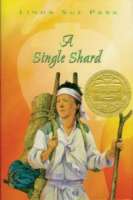
Tree-ear, a thirteen-year-old orphan in medieval Korea, lives under a bridge in a potters’ village, and longs to learn how to throw the delicate celadon ceramics himself.

Tree-ear, a thirteen-year-old orphan in medieval Korea, lives under a bridge in a potters’ village, and longs to learn how to throw the delicate celadon ceramics himself.
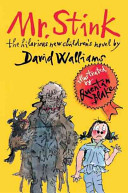
Mr. Stink stank. He also stunk. And if it was correct English to say he stinked, then he stinked as well. . . .Ó Chloe sees Mr. Stink every day, but sheÕs never spoken to him. Which isnÕt surprising, because heÕs a tramp, and he stinks. But there’s more to Mr. Stink than meets the eye (or nose) and before she knows it, Chloe has an unusual new friend hiding in her garden shed. As Chloe struggles to keep Mr. Stink a secret, and her dad tries to hide a secret of his own, the stage is set for an epic family confrontation. But there’s one other person with an extraordinary secret Mr. Stink himself.
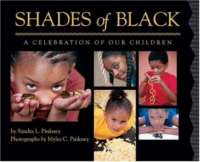
Photographs and poetic text celebrate the beauty and diversity of African American children.
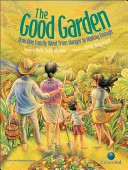
From the best-selling author of One Hen comes the inspiring story of one struggling farming family in Honduras and their journey to growing enough food to meet their needs. Based on the real story of farm transformation underway in Honduras and many other countries, this book offers children ways they can be part of the movement to grow “good gardens” and foster food security. Eleven-year-old Maria Luz and her family live on a small farm. This year their crop is poor, and they may not have enough to eat or to sell for other essentials, such as health care, school uniforms and books. When Maria’s father must leave home to find work, she is left in charge of their garden. Then a new teacher comes to Maria’s school and introduces her to sustainable farming practices that yield good crops. As Maria begins to use the same methods at home, she too sees improvements, which allow her family to edge their way out of the grip of the greedy “coyotes” — the middlemen who make profits on the backs of poor farmers. Little by little, the farms — and the hopes — of Maria and her neighbors are transformed as good gardens begin to grow.
See the review at WOW Review, Volume 3, Issue 1
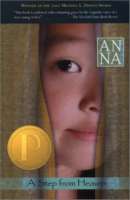
A young Korean girl and her family find it difficult to learn English and adjust to life in America.
See the review at WOW Review, Volume 3, Issue 1
This book has been included in WOW’s Language and Learning: Children’s and Young Adult Fiction Booklist. For our current list, visit our Booklist page under Resources in the green navigation bar.
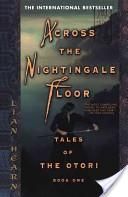
This is the first book in a new epic trilogy that has already become a bestselling sensation in England and Australia, earning comparisons to The Lord of the Rings. It begins with the legend of a nightingale floor in a black-walled fortress-a floor that sings in alarm at the step of an assassin. It will take true courage and all the skills of an ancient Tribe for one orphaned youth named Takeo to discover the magical destiny that awaits him…across the nightingale floor.
See the review at WOW Review, Volume 3, Issue 1
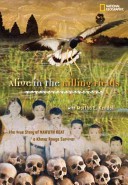
Alive in the Killing Fields is the real-life memoir of Nawuth Keat, a man who survived the horrors of war-torn Cambodia. He has now broken a longtime silence in the hope that telling the truth about what happened to his people and his country will spare future generations from similar tragedy. In this memoir, a young Nawuth defies the odds and survives the invasion of his homeland by the Khmer Rouge. Under the brutal reign of the dictator Pol Pot, he loses his parents, young sister and other members of his family. After his hometown of Salatrave was overrun, Nawuth and his remaining relatives are eventually captured and enslaved by Khmer Rouge fighters. They endure physical abuse, hunger and inhumane living conditions. But through it all, their sense of family holds them together, giving them the strength to persevere through a time when any assertion of identity is punishable by death. Nawuth’s story of survival and escape from the Killing Fields of Cambodia is also a message of hope; an inspiration to children whose worlds have been darkened by hardship and separation from loved ones. This story provides a timeless lesson in the value of human dignity and freedom for readers of all ages.
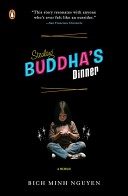
As a Vietnamese girl coming of age in Grand Rapids, Michigan, Nguyen is filled with a rapacious hunger for American identity, and in the pre-PC-era Midwest (where the Jennifers and Tiffanys reign supreme), the desire to belong transmutes into a passion for American food. More exotic- seeming than her Buddhist grandmother’s traditional specialties, the campy, preservative-filled “delicacies” of mainstream America capture her imagination. In Stealing Buddha’s Dinner, the glossy branded allure of Pringles, Kit Kats and Toll House Cookies becomes an ingenious metaphor for Nguyen’s struggle to become a “real” American, a distinction that brings with it the dream of the perfect school lunch, burgers and Jell- O for dinner, and a visit from the Kool-Aid man. Vivid and viscerally powerful, this remarkable memoir about growing up in the 1980s introduces an original new literary voice and an entirely new spin on the classic assimilation story.
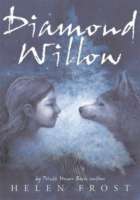
There’s
more to me than
most people
see.
Twelve-year-old Willow would rather blend in than stick out. But she still wants to be seen for who she is. She wants her parents to notice that she is growing up. She wants her best friend to like her better than she likes a certain boy. She wants, more than anything, to mush the dogs out to her grandparents’ house, by herself, with Roxy in the lead. But sometimes when it’s just you, one mistake can have frightening consequences . . . And when Willow stumbles, it takes a surprising group of friends to help her make things right again.
Using diamond-shaped poems inspired by forms found in polished diamond willow sticks, Helen Frost tells the moving story of Willow and her family. Hidden messages within each diamond carry the reader further, into feelings Willow doesn’t reveal even to herself.
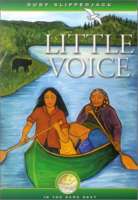
A young Ojibway girl, struggling over the fact that her father has died, spends a summer in the bush with her grandmother and finds her own identity and voice. Things have been hard for her family since her father’s accidental death in a logging accident, and Ray has been unable to express her grief. In school, the green eyes she inherited from her father are unusual for a child from an Ojibway background in a northern Ontario town and get her noticed in ways she doesn’t enjoy. At home, Ray believes that her mother, grieving herself and busy with Ray’s younger brother and sister, no longer needs her. Ray becomes so withdrawn that at times she hardly speaks. At the end of this beautiful and empowering story, which begins in 1978, the withdrawn green-eyed girl has found her voice and is not afraid to use it.